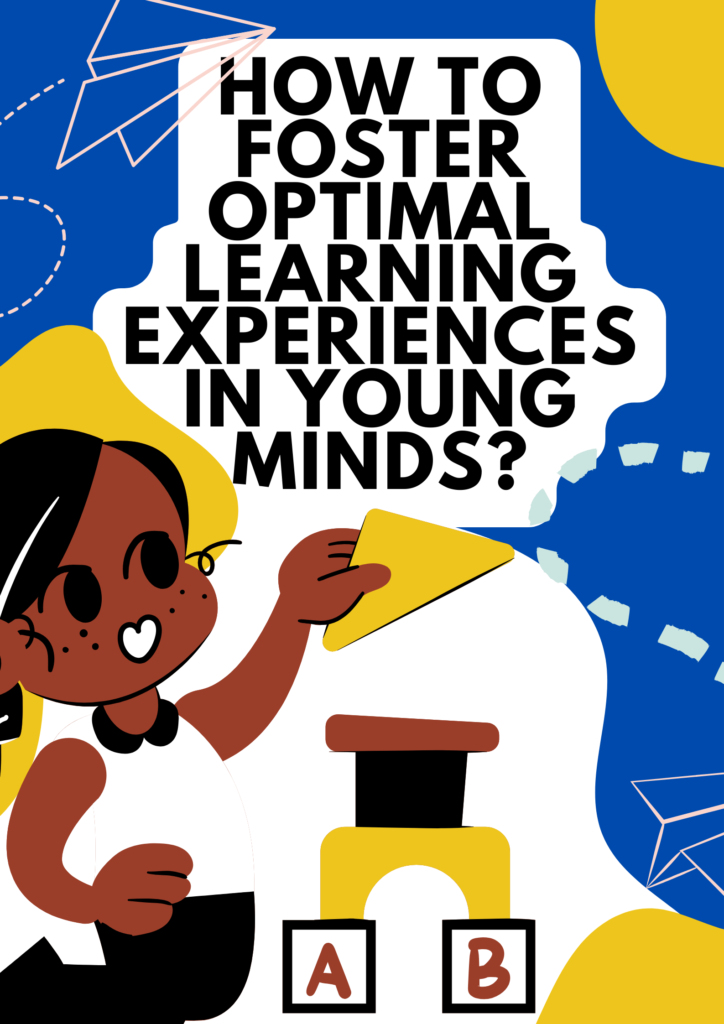Introduction:
Optimal learning experiences, as conceptualized by renowned psychologists such as Mihaly Csikszentmihalyi, have proven to be transformative across various domains of human life. This article explores the profound influence of optimal experiences on human development, education, and creativity, drawing insights from the works of pioneers like Maria Montessori and Csikszentmihalyi.
Understanding Optimal Experiences:
Optimal experience, often referred to as “flow,” is a psychological state characterized by deep concentration, intense focus, and a sense of being fully immersed and absorbed in an activity. It is a state of optimal functioning where individuals experience a perfect match between their skill level and the challenges presented by a task. This concept has been extensively researched and popularized by psychologist Mihaly Csikszentmihalyi.
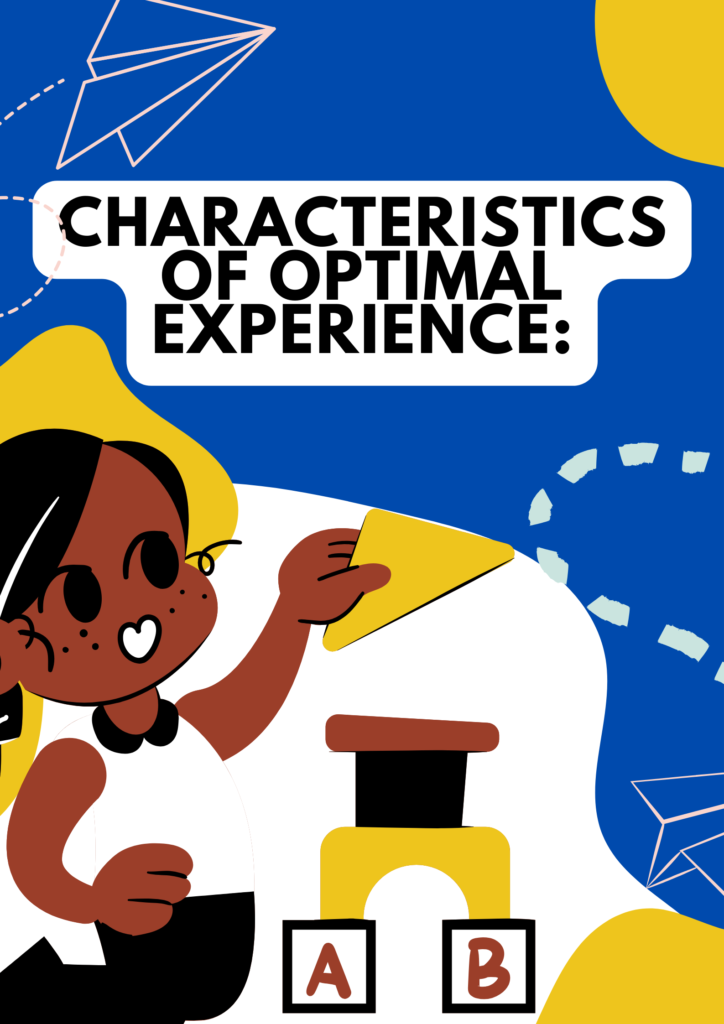
Characteristics of Optimal Experience:
- Clear Goals: In optimal experiences, individuals have a clear sense of what they are trying to achieve, providing a sense of purpose and direction.
- Immediate Feedback: Activities leading to optimal experiences provide immediate and unambiguous feedback, allowing individuals to adjust their actions in real-time.
- Balance Between Challenge and Skill: The level of challenge presented by the task matches the individual’s skill level, preventing both boredom and anxiety.
- Deep Concentration: Optimal experiences involve a state of deep concentration, where individuals are fully absorbed in the task at hand.
- Sense of Control: Individuals feel a sense of control over their actions and the outcome of the activity, contributing to a heightened sense of efficacy.
- Timelessness: Time seems to pass quickly or even stand still during optimal experiences, creating a sense of timelessness.
Research Evidence:
- Csikszentmihalyi’s Groundbreaking Research:
- Mihaly Csikszentmihalyi’s seminal work, particularly his book “Flow: The Psychology of Optimal Experience,” outlines the concept of optimal experience.
- Through extensive interviews and studies across various contexts, Csikszentmihalyi identified the characteristics and conditions that lead to the state of flow.
- The Experience of Flow Across Cultures:
- Csikszentmihalyi and his colleagues conducted cross-cultural studies to examine the universality of flow experiences.
- The findings, reported in the book “Flow and the Foundations of Positive Psychology,” indicate that the concept of flow is applicable across diverse cultures.
- Neuroscientific Correlates of Flow:
- Neuroscientific research, such as studies using neuroimaging techniques, supports the existence of flow as a distinct psychological state.
- Research published in the “Journal of Happiness Studies” suggests that flow is associated with specific patterns of neural activation, indicating its neurobiological basis.
- Applications in Education:
- In the field of education, researchers like Kevin Rathunde have explored the impact of optimal experiences on student engagement and motivation.
- Rathunde’s work, such as the study “Children’s Autonomy and Intrinsic Motivation in Learning,” provides evidence that autonomy, a key component of flow, positively influences student experiences in educational settings.
- Flow and Creativity:
- Csikszentmihalyi has linked the state of flow with enhanced creativity.
- Research published in the “Creativity Research Journal” suggests that individuals who experience flow frequently are more likely to exhibit creative problem-solving abilities.
Practical Implications:
- Enhancing Performance:
- Individuals in a state of flow tend to perform at their peak, as the alignment of challenges and skills leads to optimal performance.
- Boosting Intrinsic Motivation:
- Optimal experiences contribute to intrinsic motivation, as individuals engage in activities for the sheer joy and satisfaction derived from the experience itself.
- Improving Well-Being:
- Regular experiences of flow are associated with increased well-being, positive affect, and an overall sense of life satisfaction.

Montessori Method & Optimal Experience:
The Montessori method is built around the goal of creating a context for deep, uninterrupted concentration & optimal experience. Flow theory and Montessori education both place an intrinsically motivated state of deep concentration at the heart of education and lifelong development, and both focus on how to cultivate this
state to promote growth. Maria Montessori’s descriptions of deep concentration and its positive consequences for learning are, in fact, very close to research-based characterizations of flow. For example, in Spontaneous Activity in Education she commented,
“The paths the child follows in the active construction of his individuality are indeed identical with those followed by the genius. His characteristics are absorbed attention, a profound concentration which isolates him
from all the stimuli of his environment”
Concentration-based vision of Education:
The central challenge of implementing a concentration-based vision of education is figuring out how to prepare an environment for children that promotes flow rather than discourages it with distractions, busywork, or other extrinsic demands imposed by the adults in charge. This was the key challenge facing Maria Montessori after she famously witnessed a young child so deeply concentrating while trying to fit wooden cylinders into a wooden
block that the child’s concentration did not waver even when other children were asked to cause distractions. Based on this observation and others like it, Montessori resolved to make the goal of her method to facilitate these episodes of deep concentration, and for over one hundred years others inspired by her work have taken up this challenge.
Montessori teacher or parent & the dynamics of flow (optimal experience) :
A Montessori teacher or parent is not (or should not be) a typical teacher or parent. When observing children engaged in learning, such a person should be seeing different things, namely, the dynamics of concentration and flow. Accurately observing this process is what allows the benefits of the pedagogy to emerge. It allows the
teacher, for instance, to guide the flow of children’s attention, to know when to give a child freedom or discipline, more time or less time for a task, more or less instruction, and so on. These are the things that differentiate the Montessori approach. As Maria Montessori commented,
“With my method the teacher teaches little and observes much…it is her function to direct the psychic activity of
(The Montessori Method 173)
children”
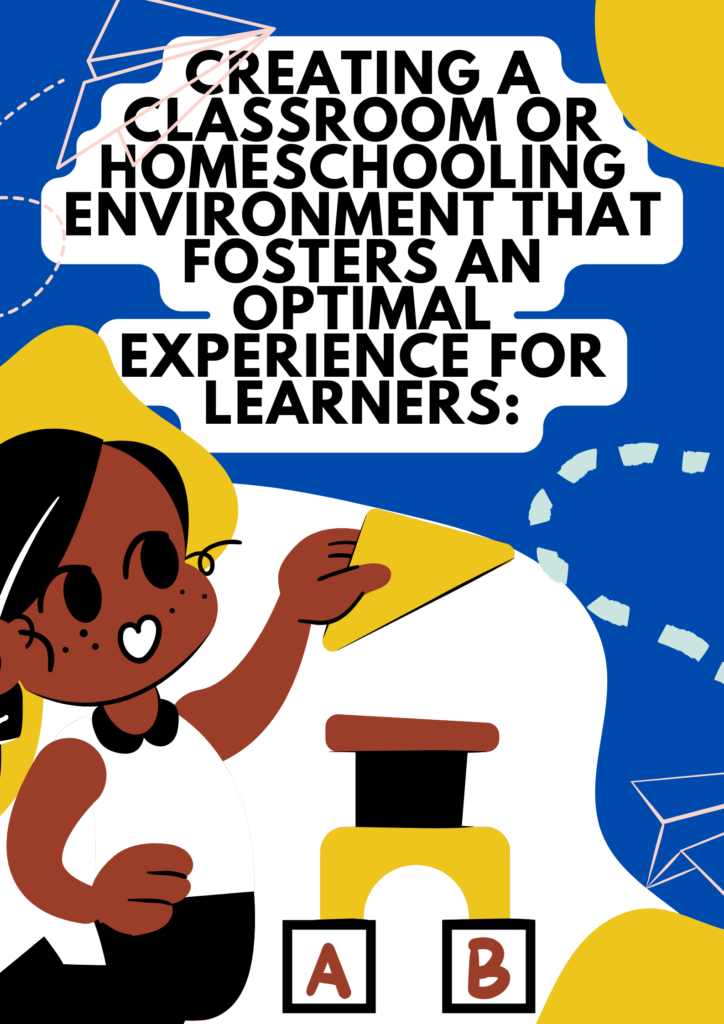
Creating a classroom or homeschooling environment that fosters an optimal experience for learners:
drawing inspiration from Csikszentmihalyi’s flow theory and Maria Montessori’s educational philosophy, involves incorporating elements that promote engagement, autonomy, and a love for learning. Here are some key principles to consider:
1. Clear Learning Objectives:
- Clearly define learning objectives and goals for each lesson or activity. This provides learners with a sense of purpose and direction.
2. Balancing Challenge and Skill:
- Tailor tasks and activities to match the individual skill levels of learners. Strive to strike a balance where challenges are neither too easy nor too difficult.
3. Autonomy and Choice:
- Foster a sense of autonomy by allowing learners to make choices in their learning. Provide options for projects, topics, or activities, giving them a degree of control over their educational journey.
4. Individualized Learning:
- Implement personalized learning approaches that cater to individual learning styles and paces. Montessori education emphasizes the importance of adapting teaching methods to the needs of each child.
5. Hands-On and Interactive Learning:
- Incorporate hands-on and interactive learning experiences. Montessori classrooms often use manipulatives and practical activities to engage learners in tangible experiences.
6. Immediate Feedback:
- Provide prompt and constructive feedback. Whether through teacher guidance or self-assessment tools, learners benefit from knowing how well they are doing in real-time.
7. Incorporate Passion and Interests:
- Encourage learners to explore topics they are passionate about. Csikszentmihalyi’s flow theory suggests that individuals are more likely to enter a state of flow when engaged in activities they find inherently interesting.
8. Structured Learning Spaces:
- Design a learning environment that is well-organized and conducive to focused learning. Montessori classrooms are known for their carefully arranged, inviting, and purposeful learning spaces.
9. Promote Collaboration:
- Create opportunities for collaborative learning. Whether through group projects or peer-to-peer interactions, social engagement can enhance the overall learning experience.
10. Encourage Reflection:
- Build in moments for reflection. Montessori education values self-reflection and encourages learners to think about their learning processes.
11. Time Management:
- Help learners manage their time effectively. Provide clear timelines for tasks and projects, promoting a sense of structure and responsibility.
12. Celebrate Progress:
- Acknowledge and celebrate learners’ achievements. This positive reinforcement contributes to a sense of accomplishment and motivates continued effort.
13. Flexibility in Learning Pathways:
- Allow flexibility in how learners approach assignments. Csikszentmihalyi’s flow theory emphasizes adapting to changing circumstances, and Montessori education values the flexibility to accommodate individual learning paths.
14. Cultivate a Love for Learning:
- Instill a love for learning. Both Csikszentmihalyi and Montessori believe that a genuine passion for acquiring knowledge is a powerful motivator.
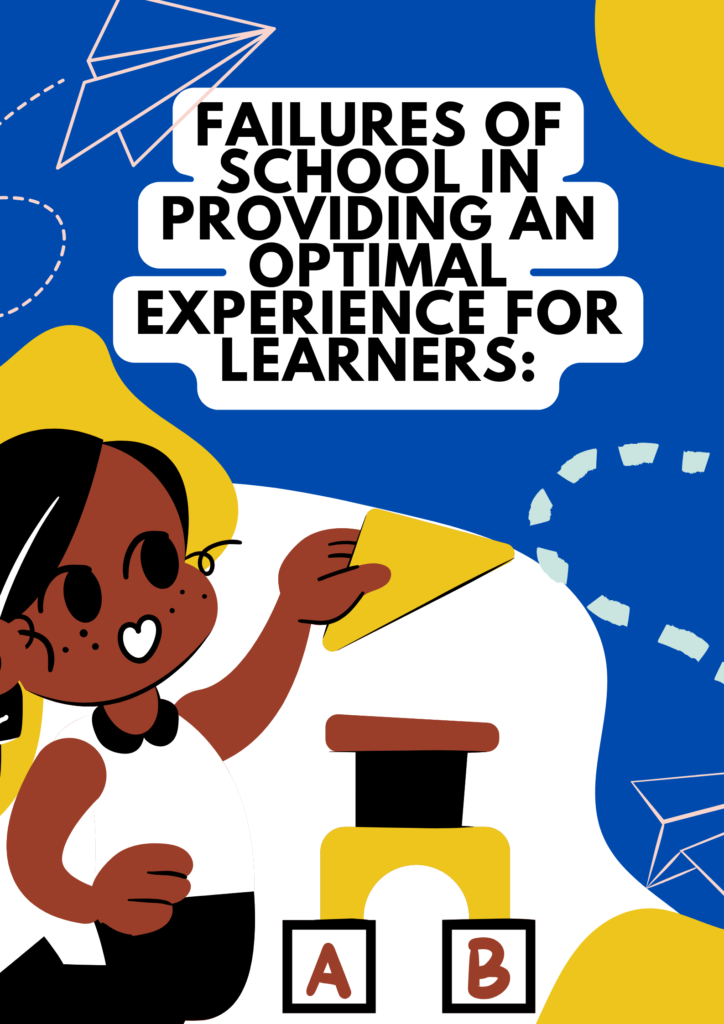
Failures of school in providing an optimal experience for learners:
While many schools aim to integrate elements of flow theory into their educational practices, some challenges and limitations hinder its full implementation:
1. Emphasis on Standardized Testing:
- Rigid Curriculum: Schools constrained by standardized testing often prioritize covering specific content over creating flexible, engaging activities that foster flow. This can limit opportunities for students to immerse themselves deeply in learning experiences.
2. Lack of Teacher Training:
- Limited Understanding: Teachers might not be adequately trained in understanding flow theory or how to create activities that facilitate flow experiences. This can lead to missed opportunities in designing engaging lessons.
3. Time Constraints:
- Pressure to Cover Curriculum: Time constraints and pressure to cover extensive curricula might discourage educators from investing time in fostering long-term, immersive learning experiences.
4. Overemphasis on Grades:
- Focus on Grades Over Learning: A culture that prioritizes grades and performance metrics can overshadow the importance of deep engagement and intrinsic motivation.
5. Limited Resources:
- Inadequate Resources: Schools with limited resources, such as funding, materials, or access to technology, might struggle to provide diverse and engaging learning opportunities that facilitate flow experiences.
6. Fixed Learning Structures:
- Lack of Flexibility: Some traditional learning structures may not easily accommodate individualized challenges or varied learning paces, hindering the customization needed to support flow.
7. Challenges in Assessment:
- Standardized Assessments: Schools tied to standardized assessments may struggle to assess learning outcomes beyond traditional testing methods, limiting diverse forms of student evaluation that align with flow experiences.
8. Classroom Management:
- Difficulty in Balancing Freedom and Structure: Creating an environment that allows for autonomy while maintaining structure and discipline can be challenging.
9. Resistance to Change:
- Resistance to New Approaches: Institutional resistance to adopting new pedagogical approaches or deviating from established teaching methods can impede the integration of flow theory principles.
Free Educational Resource:
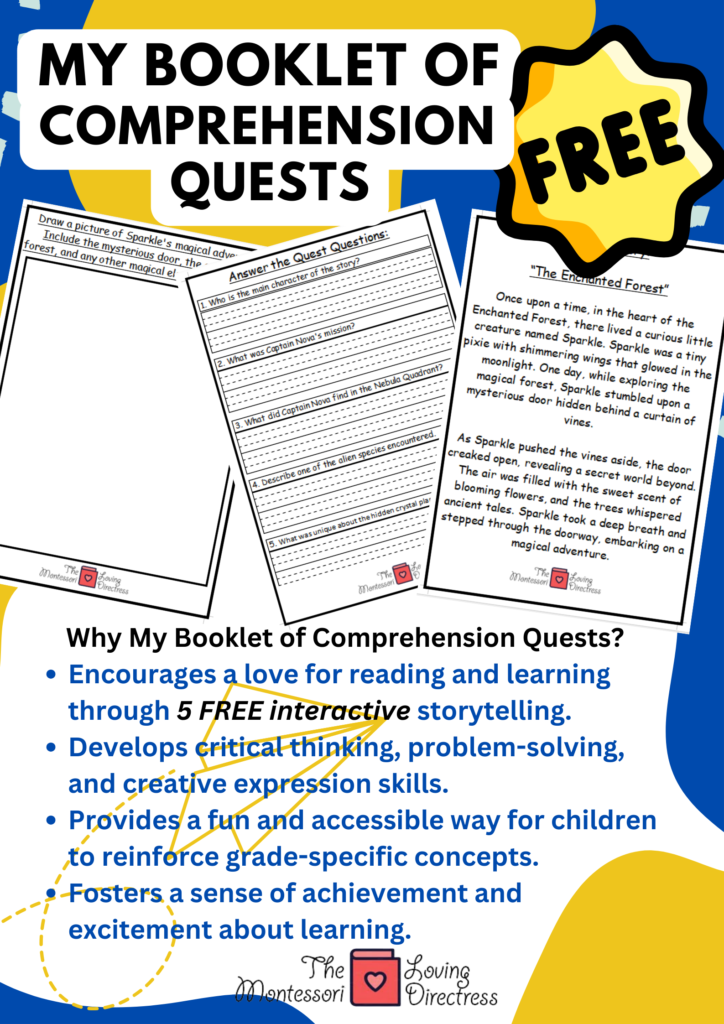
Introducing “My Booklet of Comprehension Quests” – a captivating and free educational resource designed to ignite the imagination and foster critical thinking skills in young learners. This interactive booklet features four engaging stories, each accompanied by thought-provoking quest questions and an illustration question, providing a holistic and fun approach to comprehension development.
1. Storytelling Excellence: “My Booklet of Comprehension Quests” excels in the art of storytelling, offering four distinct narratives carefully crafted to capture a child’s imagination. Each story unfolds a world of characters, settings, and adventures that will not only entertain but also serve as a rich foundation for language development.
2. Quest Questions for Critical Thinking: Embedded within each story are purposeful quest questions that encourage children to delve deeper into the text, enhancing their comprehension skills. These questions prompt analysis, inference, and evaluation, fostering critical thinking abilities that are essential for academic success and cognitive development.
3. Multifaceted Learning Experience: This resource ensures a multifaceted learning experience by combining literacy with interactive questioning. The variety of quest questions touch upon various aspects of comprehension, including vocabulary understanding, inference, sequencing, and character analysis, promoting a well-rounded educational journey.
4. Illustration Question for Visual Literacy: Enhancing visual literacy, “My Booklet of Comprehension Quests” includes an illustration question for each story. This not only reinforces comprehension skills but also encourages children to express their thoughts visually. This dual approach aims to cater to diverse learning styles, making the educational experience more inclusive and enjoyable.
5. Vocabulary Enrichment: The stories are crafted with a focus on expanding young readers’ vocabulary. Exposure to new words in context not only aids in language acquisition but also contributes to overall literacy development, empowering children to articulate their thoughts with precision and confidence.
6. Encouraging Independent Reading: Designed for independent exploration, this booklet fosters a sense of autonomy in young learners. As children engage with the stories and quest questions, they develop the skills necessary to comprehend texts independently, setting the stage for a lifelong love of reading.
7. Parent and Educator Collaboration: “My Booklet of Comprehension Quests” is a valuable tool for parents and educators alike. It provides an opportunity for collaborative learning experiences, with adults guiding children through discussions about the stories and questions, further enriching the educational process.

